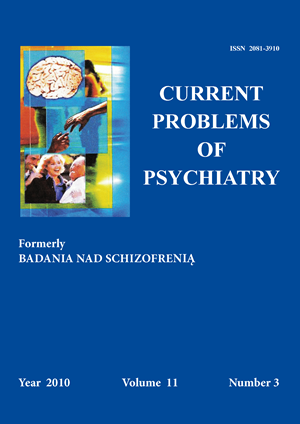Therapeutic function of traditional dances
Keywords:
choreotherapy, traditional dancesAbstract
Traditional dances and their therapeutic aspects have attracted neither psychologists’ nor psychiatrics’ interest so far. It has become an area of research for ethnomusicologists, ethnochoreologists and anthropologists of culture. Traditional dance is rarely mentioned in the context of mental health. Dance behaviour is the form of body language, whereas dance is one of the basic needs of the human being in the society that maintains the traditions of behaviours, rituals and religions. In physical movements the dancer uses exclusively his/her own body, which provides a unique possibility to express himself/herself at that moment. Each person, in accordance with her psycho-physical, innate or acquired abilities, chooses a set of gestures that suit her best. In the traditional dance culture, the dance behaviours regulated by the developed cultural patterns of circle and pair dance, absolutely prevailed. They include: a uniform way of holding the partner, clearly defined manners of spinning round the circle, keeping a permanent synchronization between the partners’ movements, and using the same for all pairs, repetitive dance motif.
The project aimed at giving an overview of the academic literature and an outline of the methodology for future rehabilitation groups of schizophrenic and affective patients, whose therapeutic programme would include elements of traditional European round and processional dances. At the beginning and at the end of a therapeutic programme an assessment of mental state would be made with the use of standard clinical scales.
The beneficial effect of traditional dance on health has been recognized for a long time, although it is difficult to find objective research concerning this issue. Inevitable cultural transformations diminished the role of traditional dance in the societies where it came into being and took hold. The widespread interest in dance observed recently in many European cities provides the basis for the theory about its beneficial therapeutic influence on mental health of healthy people. It may be presumed that the therapy using elements of traditional dance will exert a similarly positive effect on patients with mental disorders.
References
1. Kubinowski D. Ekspresja taneczna w tradycyjnym i współczesnym modelu wiejskiej kultury tanecznej W: Bielawski i Dąbrowska, red., Taniec, rytuał i muzyka. Warszawa: 1997.
2. Welcz H. Analiza psychoterapeutycznego znaczenia zjawiska rytuałów muzyczno-tanecznych na przykładzie praktyk tarantyzmu z południowych Włoch. Bad. nad Schizofrenią, 2008.
3. Eyigor S., Karapolat H., Durmaz B., Ibisoglu U., Cakir S. Wpływ tureckiego tańca ludowego na kondycję fizyczną, równowagę, stan psychiczny i jakość życia starszych kobiet. Arch. Geront. Geriatr., 2008.
4. Pędzich Z. red. Psychoterapia tańcem i ruchem. Warszawa: 2009.


